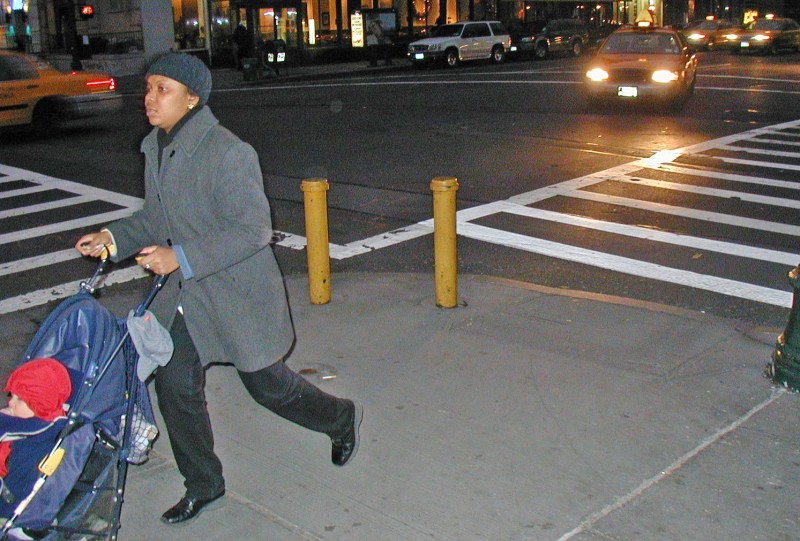Op-Ed: Hey, Streetsblog, Bollards Everywhere Ain’t So Bad!

Ten-year-old Enzo Farachio was killed by a driver in an SUV as the boy waited for a bus at Ocean Avenue and Avenue L in Brooklyn last month.
In response, the local Council Member Chaim Deutsch proposed a much-derided bill to install bollards at every bus stop in the city.
Is that a good idea? Yes — although it may not be the optimal solution.
As Deutsch’s bill suggests, bollards can ensure safety at bus stops. Given that people congregate at bus stops, and that curbs often do not stop the SUV-driver who is speeding/drinking/texting/turning, bollards could help.
As a pro-transit street designer, however, I would first try to install bus bulbs (left) wherever possible.
A bus bulb means that the sidewalk is widened into the parking lane at the bus stop. (Broadway in SoHo has a few of these.) They provide more real estate for a proper bus shelter with seats, shade, real-time arrival information, a drinking fountain, WiFi, and USB charging.
Bus bulbs can also be designed so that passengers move directly onto the bus. This is called level boarding. No kneeling bus, no swinging wheelchair platform, no resting your bags on the step while you struggle up the stop. You just walk on (photo below).
In raising the bus stop to bus height, a high curb is created which protects waiting people from errant drivers. No need for bollards. A win-win for a city that is moving toward bus rapid transit. And since sidewalk costs about 1/3 of roadway, we save money.

What about places where, for whatever reason, you cannot install a bus bulb? Like if there is no parking lane or the street is too narrow. Raised planters with tulips offer one solution. Let errant drivers crash into the dirt (or install a bollard to protect the planter).
But back to Deutsch’s bill.
Bollards work — that’s why they are positioned at fire hydrants, driveways, building edges, medians, and other places where people want to stop the advance of vehicles. In each case, someone has made the decision that whatever the bollard is protecting is worth the annoyance of the bollard.
True, bollards can be ugly. Most people would probably say that six-inch diameter steel pipes filled with concrete stuck in the ground at five-foot intervals are not so attractive. Designers, however, have found ways to make them less visually objectionable.
For example, nice bollards (below right) can be painted to resemble a barbershop pole, or molded to resemble chess pieces or little ponies. Steel-ball bollard can provide a place to sit. The bell-shaped bollards on Houston Street even have fans.
Some would say that bollards and bus bulbs both are great ideas, but they seem costly. True. So are traffic casualties. According to federal actuary tables, each roadway death costs society $4 million.
Streetsblog has estimated that adding bollards to every bus stop in the city would cost $510 million. If you divide that sum by $4 million, you get 127.
Now, 127 people is only slightly more than the 114 people killed by drivers in New York City last year. In other words, such an expenditure would “pay for itself” in social terms in a little more than a year. By comparison, estimates of what it will cost to rebuild/reroute the BQE around Brooklyn Heights rise up to $8 billion. It’s a matter of priorities.
Bollards can be ugly or pretty, oppressive or sensible, but they do work. Deutsch’s bill, then, which seeks to protect people at bus stops by means of bollards, is sensible and a pragmatic use of half-a-billion dollars. I would go further and get better bus stops and bus service as well.
Michael King lives in Brooklyn and designs streets worldwide. He has worked in 22 countries on five continents, co-authored the National Association of City Transportation Officials Urban Street Design Guide, and was the first director of traffic calming at NYC DOT. Follow him on Twitter @movethecurb


